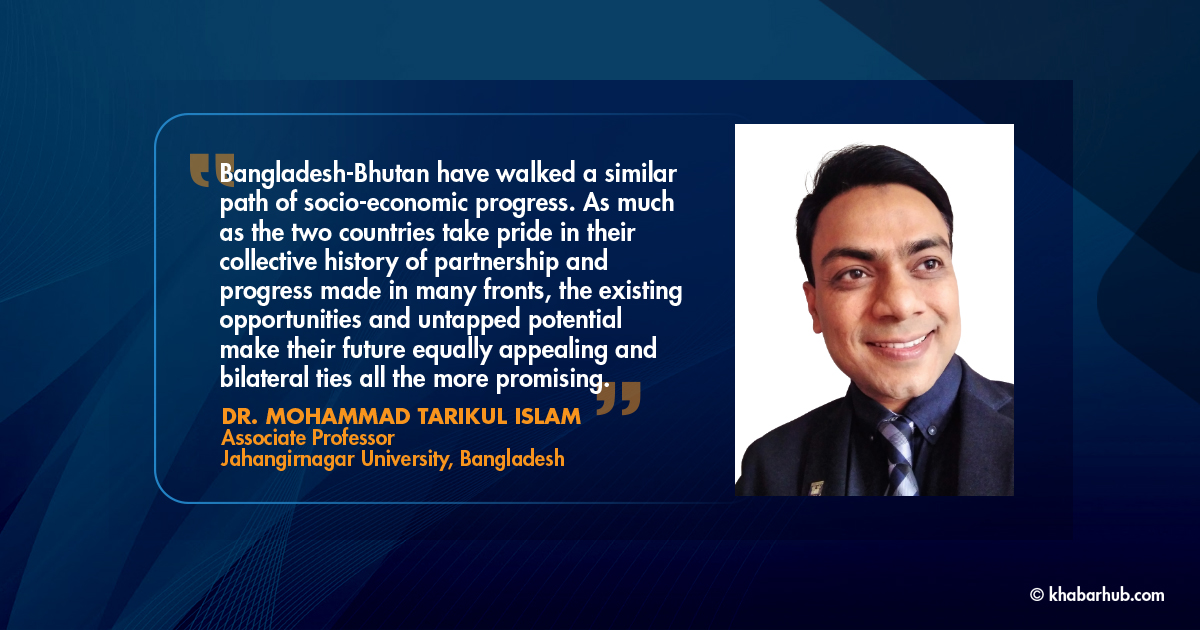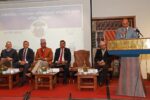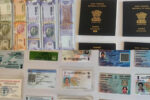Bangladesh and Bhutan had signed the Preferential Trade Agreement (PTA) on 6 December 2020 to open up an avenue of mutual interests for giving way to the duty-free entry of a wide range of products from Bangladesh and Bhutan into each other’s markets.
Underlining the importance of the PTA agreement, Prime Minister Sheikh Hasina hoped that, Bangladesh-Bhutan preferential trade agreement (PTA) would further consolidate the relations between the two neighboring countries for mutual benefit.
They have had a strong and long-standing relationship since their independence. They are common members of the South Asian Association for Regional Cooperation (SAARC) and the Bay of Bengal Initiative for Multi-Sectoral Technical and Economic Cooperation (BIMSTEC).
Bangladesh and India are the only countries to have resident embassies in Bhutan.
As the Bangladesh Liberation War approached its end, with victory over the West Pakistani forces in sight, the King of Bhutan, Jigme Dorji Wangchuck, sent a telegram to the Acting President of the Provisional Government of Bangladesh, Syed Nazrul Islam, on the morning of 6 December 1971 recognizing the new country. This was later followed in the day by India.
Bangladesh and Bhutan have been leveraging business opportunities and competitive advantages available to them.
Nonetheless, both Bhutan’s relative closeness to India (rather than China, because of the situation in Tibet) and Bangladesh’s relative closeness to India (because of its history with Pakistan), are mitigated by these small states’ caution vis-à-vis India’s suffocating embrace and their ability to leverage the economic lure of China.
These are mainly in the areas of raw material availability and production capabilities. While the two countries do not directly share a border – they are separated by a 30-kilometer-wide strip of Indian territory – they continue to craft suitable foreign policies focused on building relations with each other.
In line with this, Bangladesh’s Prime Minister Sheikh Hasina unveiled a foundation stone plaque for the construction of chancery in Thimphu in 2017.
Over the years, the two countries have committed themselves to enhance their strategic development partnership in several areas.
These included hydropower, free trade and transport. In 1985, both Bhutan and Bangladesh became the founding members of the SAARC. Paro and Dhaka were connected by air in 1986 when Bhutan’s national airline Druk Air started scheduled flights along the route.
This connectedness was both symbolic and functional as it shortened the time taken to travel 659 kilometers of road between the two capitals of Dhaka and Thimphu.
Bangladesh exports products such as readymade garments, ceramics, pharmaceuticals, jute and allied products, leather goods, toiletries and agricultural produce to Bhutan.
The latter has agreed to facilitate the entry for these products to promote trade and investments between the two countries.
The signing of a memorandum of understanding (MoU) on the use of inland waterways for the transportation of bilateral trade and transit cargoes between Bhutan and Bangladesh will pave the way for greater connectivity with Chittagong and Mongla ports.
With a population base of over 160 million people, combined with its gross domestic product rate of more than six percent in the previous decade, Bangladesh’s open-door policy has led it to be viewed as an upcoming ‘Asian Tiger’.
The proposed trilateral MoU between Bangladesh, Bhutan and India on cooperation in the field of hydroelectric power on the principles of the agreed regional framework would help to address the issue of power deficit in the two small states.
Tourism is another area of cooperation between the two countries. In order to maximize its potential, representatives of the tourism industries on both sides have been encouraged to build connections for win-win results.
Cooperation in other areas, including information, communication and technology, connectivity, health, agriculture, education, culture, water resources, hydro-power projects and trade and commerce have also been discussed.
Bhutan exports to Bangladesh are greater than its imports. Bangladesh is Bhutan’s second-largest trading partner and is a significant importer of mandarins, apples, boulders, pebbles and gravels.
Bhutan and Bangladesh signed a trade agreement in 1980 under which Bangladesh conceded obligation-free access to 18 items from Bhutan.
The total trade between the two countries has risen over the decade. In 2017, Bhutan’s exports to Bangladesh reached more than US$50 million (S$70.77 million), marking Bhutan’s highest ever export figures to Bangladesh, making it the only country with whom Bhutan enjoys a massive trade surplus.
The growth of riverine trade avenues not only leads to decreasing costs and time, but it also signals increasing sub-regional cooperation of the kind envisaged in the Bangladesh, Bhutan, India, Nepal Initiative (BBIN).
For example, a Motor Vehicle Agreement was signed in Thimphu in 2015 to facilitate the on-going South Asian Sub-Regional Economic Cooperation effort by the governments to integrate and connect the region.
With a population base of over 160 million people, combined with its gross domestic product rate of more than six percent in the previous decade, Bangladesh’s open-door policy has led it to be viewed as an upcoming ‘Asian Tiger’.
Its growth can, in part, be attributed to the emergence of a burgeoning group of domestic companies such as SQUARE, PRAN-RFL Group and ACI Group.
There is also immense potential for Bangladesh to export readymade garments and pharmaceuticals to Bhutan. The two countries agreed to grant duty and quota-free entry to some commodities during the visit of Bhutan’s Prime Minister, Lotay Tshering, to Bangladesh in April 2019.
An agreement on the transportation of commodities was also signed to boost trade between the two countries by utilizing inland waterways to transport transit cargoes via India.
Besides, MoUs were also signed to enhance cooperation in the areas of health, agriculture, tourism and training of public administration officials.
A crucial precondition for the successful conduct of economic diplomacy is the existence of a critical pool of skilled personnel in the government, private sector and civil society.
While India’s historic goodwill in Bangladesh and efforts to cultivate ties in Bhutan continue to form part of the historical friendship narrative, there are newer variables as well.
This pre-condition is to understand and negotiate trade, investment and other economic issues from the national development perspective after taking into account a country’s strengths, limitations, opportunities and threats. Bangladesh is keen on progressing hand-in-hand with Bhutan.
The bilateral relationship between the two countries has been deepening as high-level economic exchanges through visits and meetings take place regularly alongside the wide-ranging people-to-people interaction.
The SAARC Framework Agreement for Energy Cooperation has been another platform where the potential for closer sub-regional energy ties continues to be discussed, albeit the progress here is slow.
Such a framework would theoretically help Bangladesh import energy from Bhutan. However, as the two countries do not share a border, the need for energy transmission through India means the latter plays a crucial role in the progress of this hydropower cooperation.
While India’s historic goodwill in Bangladesh and efforts to cultivate ties in Bhutan continue to form part of the historical friendship narrative, there are newer variables as well.
Over 82 percent of its imports were from India and included petroleum products, live animals, livestock products, prepared foodstuffs, vegetables, automobiles and spares, machinery and fabrics.
The most significant policy areas relate to hydropower, trade and the BBIN Initiative. Fostering linkages in trade, market access, transport and infrastructure connectivity are key to India’s neighborhood strategy.
Given China’s expansion in the energy sector in Bangladesh, it is possible that India would lean towards Bhutan to have a jab in tending to Bangladesh’s energy shortage.
If balanced against ecological concerns and on well-negotiated terms, the development of Bhutan’s hydropower sector and its export of energy beyond India directly to Bangladesh are certainly in Bhutan’s interests.
Nonetheless, both Bhutan’s relative closeness to India (rather than China, because of the situation in Tibet) and Bangladesh’s relative closeness to India (because of its history with Pakistan), are mitigated by these small states’ caution vis-à-vis India’s suffocating embrace and their ability to leverage the economic lure of China.
The result is a diplomatic merry-go-round where Bhutan and Bangladesh, as small states, negotiate a complex dance of international moves hinging on friendship and national interests.
Bhutan’s goals for sustainable development, optimization of its ‘Gross National Happiness’ model and its vision to become self-reliant demand prudent economic management and the rapid diversification of economic relations with Bangladesh and other countries.
Bhutan’s tourism and hospitality sector has tremendously benefited from the exponential rise in tourists from Bangladesh.
According to Bhutan’s tourism data, the number of Bangladeshi tourists stood at 10,450 in 2018. Bhutan is planning to impose a ‘Sustainable Development Fee’ (SDF) of $65 (S$92) per person per day, in addition to a $40 (S$56.7) license preparing expenses for tourists from Bangladesh, India and the Maldives from the end of December 2020.
If this takes place, it could have an adverse impact on the number of travelers from Bangladesh to the country. While Bhutan’s Foreign Minister, Tandi Dorji, has denied that the new charges are planned to control visitor numbers, such an eventuality could force the Bhutanese government to revisit its proposed fee imposition.
It has now become a significant exporter of electricity to India, and this is one area where joint collaboration between Bangladesh and Bhutan can prove to be beneficial for both.
Incidentally, Bangladesh is the second-largest trading partner of Bhutan after India in the region, as Bhutanese trade is heavily concentrated in South Asia.
In 2016, around 85 percent of Bhutan’s total exports went to India, comprising mainly hydropower, base metals, wood products, plastics, minerals, articles of stone, plaster, cement, asbestos, mica or similar materials, food products, vegetables, textiles and alcohol.
Over 82 percent of its imports were from India and included petroleum products, live animals, livestock products, prepared foodstuffs, vegetables, automobiles and spares, machinery and fabrics.
Bhutan is a natural haven for hydropower production, with an estimated 30,000-megawatt power generation potential.
It has now become a significant exporter of electricity to India, and this is one area where joint collaboration between Bangladesh and Bhutan can prove to be beneficial for both.
The two need to have a forward-looking approach and keep the momentum going in order to consolidate the already excellent’ relations for the benefit of their people.
(Dr. Mohammad Tarikul Islam is an Associate Professor of Government and Politics at Jahangirnagar University in Bangladesh. Prior to joining University in 2014, he was serving United Nations Development Program, Bangladesh for a period of seven years in different capacities)









Comment